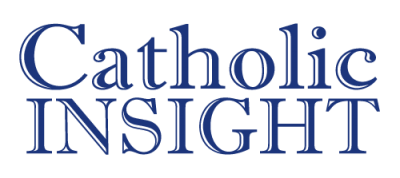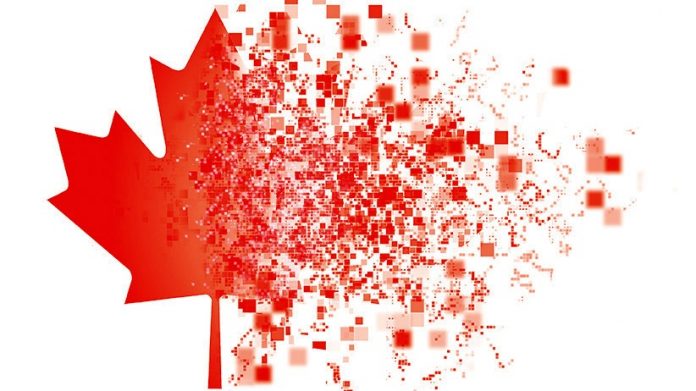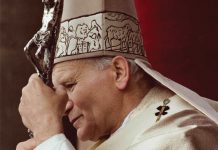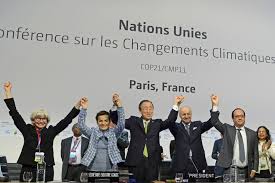As Canadians approach the snap federal election on April 28, they must confront a reality more disquieting than any partisan rivalry: the installation of Mark Carneyas prime minister, not through democratic mandate, but through elite consensus. Unelected, unaccountable, and parachuted into power through backroom arrangements, Carney represents a paradigmatic shift, not just in Canadian politics, but in the very nature of governance in the 21st century.
Behind his polished credentials lies a deeper threat: the transformation of liberal democracy into a technocratic regime, managed not by representatives of the people but by global institutions and financial elites. This article examines how Carney’s ascent reflects a broader collapse of democratic accountability and Catholic moral clarity, masked in the language of sustainability, inclusion, and finance. Canadians are not merely voting for a leader; they are voting on whether they wish to be governed or managed.
From Bay Street to Parliament Hill
Carney’s meteoric rise through global financial institutions, Goldman Sachs, the Bank of Canada, the Bank of England, the UN, and the World Economic Forum, cements his place in the so-called “post-national management class,” a cadre of elite actors who operate above democratic scrutiny. He is the consummate globalist: fluent in the language of ESG, stakeholder capitalism, and climate finance, but detached from national identity, civic roots, and local accountability.
His support for Klaus Schwab’s Great Reset and agreement with papal documents like Laudato si’ are not signs of a moral vision but rather ways to gain legitimacy, using a technical approach dressed in religious language to ensure both secular and spiritual groups go along with it.
This conflation of theological authority and technocratic ideology deserves closer scrutiny. As I wrote previously, here and here, Carney’s vision is not one of solidarity or subsidiarity, but of submission to the algorithm, to centralized data, and to elite decree masquerading as moral necessity.
Despite invoking Laudato si’ to justify his climate policies, Carney’s proposals invert the encyclical’s core insights. Pope Francis warns against technocratic domination and calls for integral ecology rooted in human dignity and moral responsibility. His model treats environmental reform as a financial transaction to be managed by global elites. In his book Value(s): Building a Better World for All, Carney proposes an enormous expansion of top-down systems: carbon pricing, net zero mandates, digitized energy tracking, and global financial disclosure frameworks. Far from empowering local communities, as subsidiarity demands, the result is a consolidation of power among international regulators and corporations. His “sustainable finance” initiatives claim to humanize capitalism but instead produce what he calls a new “asset class” of decarbonization investments judged not by truth or justice, but by how well they align with net zero targets.
Carney’s green industrial policy is pitched as a triple win of growth, equity, and environmental stewardship. But behind the glossy language of “just transitions” and “green opportunity,” his plan reveals a coercive global model where financial capital dictates social priorities. In Value(s), he repeatedly affirms the need to “catalyze” investment through public-private partnerships, aggressive regulation, and market incentives. Yet his policy prescriptions disproportionately benefit those already situated in high finance and leave little room for democratic contestation or cultural variation. Laudato si’ speaks of stewardship; Carney speaks of scalable markets and “climate aligned portfolios” enforced by ESG algorithms. What results is not the healing of creation, but the commodification of virtue, engineered by a managerial class answerable to no one.
ESG: Morality by Mandate
These theological and philosophical distortions translate directly into policy through the frameworks Carney has championed. As Chair of Brookfield Asset Management and UN Special Envoy on Climate Action and Finance, Carney helped shape ESG frameworks that impose ideological compliance as a condition of market access. What he calls “values-based capitalism” is in reality a mechanism of control: a tool for redirecting capital away from dissenting sectors and toward preapproved narratives of equity, climate, and inclusion.
This system cripples small businesses, penalizes dissenting viewpoints, and empowers regulatory behemoths to act as moral gatekeepers. Meanwhile, Carney’s own firm, Brookfield, invested heavily in fossil fuels abroad and paid no corporate taxes in Canada across three fiscal years. His selective morality is not oversight. It is strategy.
A Technocrat, Not a Democrat
Carney’s rise to leadership was not a triumph of civic participation. Only 40 percent of Liberal members voted in the leadership contest. Of those, 85.9 percent chose Carney, meaning that less than 0.5 percent of Canadians effectively installed him as prime minister. In Nepean, the sitting MP was disqualified to clear the way for Carney, a man so unfamiliar with the riding that he publicly misidentified its geography.
His international validation came quickly: a private call with Donald Trump led the former U.S. President to address him as “Prime Minister.” That Carney could be affirmed abroad before earning legitimacy at home speaks volumes about where power now resides.
Pandemic Precedents, Financial Repression
During COVID-19, Carney supported the Emergencies Act and smeared peaceful protestors as “seditious.” The freezing of bank accounts without trial became a prototype for the financial tools Carney champions. It revealed his underlying conviction: civil liberties can, and should, be subordinated to elite judgments about the public good.
This ethos extends beyond health policy. Under Carney, the lines between government, finance, and ideology blur into a single apparatus of enforcement.
Speech Crimes and Censorship: A Glimpse into the Future
If Carney consolidates power after April 28, Canadians should expect an intensification of censorship. The anticipated return of legislation akin to Bill C-63 (the Online Harms Act) will criminalize undefined “harmful content,” with potential penalties ranging from steep fines to life imprisonment.
The system will empower anonymous supporters to report violations and receive a share of the fines. This is the institutionalization of paid ideological informants. Under this regime, independent journalists, podcasters, and ordinary citizens who challenge “approved narratives” risk criminal prosecution. If Mark Carney wins, expect a future where independent journalists are no longer tolerated but targeted and arrested more regularly, because freedom of the press threatens the very machinery of Liberal bureaucracy.
This climate of legal intimidation has also shaped how opposition leaders navigate state-controlled information. Pierre Poilievre’s refusal to seek national security clearance under the NSICOP Act has been cynically spun by Liberal operatives as evasive or suspicious, but the reality is far more calculated and constitutionally grounded. Under the Act, any MP granted clearance is legally forbidden from speaking about classified matters, even in Parliament, under threat of up to 14 years in prison. In practice, this allows the prime minister and his cabinet to control what information is selectively disclosed while muzzling the opposition’s ability to speak freely. Poilievre has wisely avoided this trap, understanding that accepting clearance would strip him of the very freedom to challenge the government’s narrative, especially on issues of national security or foreign interference.
This climate of managed dissent extends far beyond Parliament Hill and into the public square.
The state will not need to refute dissent. It will simply erase it. And legacy media, bought and paid for by Liberal subsidies, will serve as the ministry of truth.
During the Q&A following the April 16 French-language leaders’ debate, independent media outlets executed a clever and peaceful coup. They arrived early, secured spots in line, and dominated the questions. The result? Carney was hit with hard, unfiltered questions from Rebel News, True North, and The Counter Signal—questions CBC never dares to ask. In response, establishment media figures like Rosemary Barton had a meltdown, bemoaning that the debate commission had allowed these voices in. The humiliation of the state funded press was unprecedented. Despite deploying over 20 journalists, CBC failed to land a single question before the independents reshaped the narrative.
This moment underscored what many Canadians already suspect: government funded media are not there to challenge power, but to protect it. That elite protection extended into real time media spin and gaslighting. Barton, during her on-air indignation, referred to journalists from Rebel News, True North, and The Counter Signal as “these people.” Had anyone else used that phrase to describe CBC staff, the outrage would be immediate. As Sheila Gunn Reid put it, “Did she just call my Jewish boss, and my Black and Indigenous female colleagues ‘these people’? Yikes. I’m reliably informed by the CBC this is a firable [sic] offence.”
Later, Barton responded to Drea Humphrey’s question by accusing outlets like Rebel News and True North of pushing “partial truths.” While acknowledging that over 200 churches had indeed been vandalized or burned, she claimed that these attacks were understandable given that “remains of Indigenous children have been found.” This is factually untrue. To date, no confirmed remains of Indian residential school children have been discovered outside known cemeteries. Excavations at sites like Kamloops, the one that ignited national outrage, have yet to uncover a single body, largely due to delays or reluctance from band leaders. Barton’s statement is not a correction. It is the very misinformation she accuses others of spreading. Carney’s refusal to clarify or comment on these deeply consequential cultural flashpoints underscores his loyalty to elite approved narratives over truth, reconciliation, or historical accuracy.
Unsurprisingly, Carney has voiced support for continued funding of the CBC, despite its overt partisanship, its mishandling of this very ordeal, and its role as an uncritical amplifier of the government’s ideological agenda. In Carney’s Canada, power is no longer debated; it is managed, scripted, and enforced.
Debate Commission as Narrative Control
In a move that revealed more than it concealed, the Leaders’ Debates Commission abruptly cancelled all post debate media scrums following the English language debate of April 17, citing an inability to guarantee a “proper environment” after tensions between legacy media and independent journalists. This came on the heels of two other eleventh hour decisions: the exclusion of the Green Party co-leader and a sudden time change to avoid conflicting with a hockey game. Far from being impartial arbiters of public discourse, the Commission has become a gatekeeping apparatus, one that shields political elites from unpredictable questions and filters public engagement through the lens of institutional control. Its very origins are suspect. Maxime Bernier narrowly lost the Conservative leadership in 2017, left the party in August 2018, and launched the People’s Party of Canada the following month. Within weeks, the Trudeau government created the Leaders’ Debates Commission. In 2021, Bernier’s PPC earned 4.94 percent of the national vote, just shy of 5 percent, but under the Commission’s own rules at the time, enough to qualify him for participation in the next federal debate cycle, even without an elected MP. Yet now, as Bernier’s support grows, the Commission has quietly changed the rules to ensure his continued exclusion. Mainstream journalists have not questioned this anti-democratic maneuvering. They have applauded it or ignored it, revealing their true role not as guardians of public accountability, but as loyal curators of the approved narrative.
$40 Billion, No Oversight
With Parliament still prorogued, the Carney-Trudeau regime quietly authorized $40.3 billion in spending, without a vote, without debate, and without a shred of public scrutiny. This unprecedented financial maneuver was rubber-stamped by the unelected, Liberal-appointed Governor General through a special warrant, acting on the advice of a government that has operated without parliamentary oversight for more than six months. There was no press conference, no accountability, and no media outrage, just a quiet, bureaucratic signature authorizing the largest executive spending spree in Canadian history. If Canadians want to know what technocracy looks like in practice, this is it: elite rule by decree, insulated from both law and electorate.
Housing or Population Engineering?
Carney’s proposal to borrow $35 billion to build 500,000 homes under the pretext of addressing the housing crisis conveniently aligns with the Century Initiative, a plan to increase Canada’s population to 100 million by 2100, largely through mass immigration.
Mark Wiseman, Carney’s ally and a former BlackRock executive, co-founded this initiative and now advises Carney on Canada-U.S. relations. Their vision is clear: a high-debt, high-immigration, high-density Canada governed by global metrics, not local needs. The result is demographic engineering through infrastructure policy, an agenda largely ignored by opposition parties, save for the People’s Party of Canada.
The China Problem
Carney’s troubling tolerance of foreign authoritarianism is most clearly illustrated by his handling of the Chiang-Tay affair, in which Liberal MP Paul Chiang publicly joked about surrendering a Hong Kong dissident to Chinese officials. Carney initially dismissed the incident, and it was only under public pressure that Chiang resigned. This episode, paired with Carney’s longstanding financial entanglements in China, reveals a troubling indifference to national sovereignty and democratic norms. His advocacy for the Chinese yuan as a potential global reserve currency dovetails with Beijing’s strategic ambitions and raises serious questions about his allegiance to Western financial independence.
In 2024, Carney was photographed with the executive team of the Jiangsu Commerce Council of Canada, a pro-Beijing lobby group operating as a soft power proxy. Although he denied any official meeting, the Globe and Mail published the images and affirmed their reporting, even as Liberal operatives attempted to pressure the group into removing the evidence. That same week, a federal intelligence briefing revealed that Chinese propaganda networks were actively promoting Carney on platforms like WeChat, portraying him as a “tough leader” capable of standing up to the United States. His claimed ignorance about the meeting and the media’s rush to downplay it should alarm any Canadian who still values transparency, sovereignty, and accountability. Carney’s record on China suggests not passive naivety, but active alignment with elite-driven global interests.
These concerns were amplified by a damning letter released shortly before the election by RCMP Sgt. Peter Merrifield and retired detective Paul McNamara. The whistleblowers accused nine current and former Liberal cabinet ministers, including Marco Mendicino, Dominic LeBlanc, David McGuinty, and Chrystia Freeland, of gross negligence in the face of mounting foreign interference. Among the most serious charges were the mishandling of national security warnings, the exposure of covert Canadian agents, and the unlawful deployment of spyware against unionized officers. The officers called for the immediate removal of the implicated ministers, warning that their inaction erodes the rule of law and violates the Charter of Rights and Freedoms.
This explosive letter further undermines Carney’s credibility. His failure to act decisively in response to the Chiang episode now appears part of a broader pattern: one of calculated silence, strategic ambiguity, and institutional capture. The situation lends real world weight to Klaus Schwab’s infamous admission that the World Economic Forum had “penetrated the cabinets” of democratic governments, including, by his own boast, more than half of Trudeau’s. Far from being an independent leader, Carney increasingly resembles the archetype of a global managerial figure: ideologically aligned, insulated from accountability, and loyal not to the public, but to the networks that elevated him.
Faith as Merely Words
Carney’s invocation of Catholic social teaching is not grounded in orthodoxy but in optics. One of the core principles of Catholic social teaching is subsidiarity, the idea that matters ought to be handled by the smallest, most local, and most immediate authority capable of addressing them effectively. It safeguards against overreach by centralized powers, ensuring that families, churches, and communities are not smothered by distant bureaucracies. Carney’s model, by contrast, elevates transnational governance and financial technocracy, precisely what subsidiarity warns against.
Laudato si’ is retooled to justify centralized carbon credits. Fratelli Tutti becomes a license for global redistribution. This is not the faith of Augustine or Aquinas; it is the theology of technocracy, dressed in liturgical garb.
Meanwhile, Carney backs policies that expand euthanasia to the mentally ill, push gender ideology into Catholic schools, and protect abortion access at all costs. His silence on these issues, even as his daughter reportedly received treatment at the Tavistock gender clinic, reveals that his moral compass is not guided by the Catholic faith; he seems rather to be guided by public appeal.
When asked at a press conference how many genders there are, Carney replied, “In terms of sex, there are two,” only to immediately backpedal into a blur of equivocation, mumbling, “We work in… we value all Canadians for who they are.” His discomfort was palpable, not because the question was absurd, but because a clear answer might offend the ideologues his party has empowered. Carney recently affirmed his support for “LGBTQ+ rights and inclusion” and spoke of building “an inclusive Canada” while refusing to articulate any meaningful boundaries regarding biological sex and gendered spaces. His statements are not anchored in Catholic anthropology but in the moral relativism of elite consensus, where objective truth is sacrificed on the altar of inclusivity.
Carney is the kind of technocrat who can’t say how many genders exist without consulting a polling firm. He governs not by conviction, but by calibration. measuring every answer against the expectations of his elite peers and activist advisors. When pressed on whether women have a right to their own spaces, sports, and shelters, Carney’s answer amounted to: “This is Canada.” A phrase so vague it says everything about his priorities and nothing about reality.
During that same post-debate press conference, Rebel News journalist Drea Humphrey posed a searing question to Jagmeet Singh: why, if his party claims to oppose hate, has it remained silent on the over 200 church burnings and acts of vandalism since 2021? These attacks, largely targeting Christian and Indigenous communities, were fueled by a media narrative that remains unsubstantiated by forensic evidence. Singh refused to answer. But just as striking is the fact that Carney, who so readily speaks of solidarity and reconciliation, has never addressed this systematic desecration of Canada’s Christian heritage. For someone who frequently name-drops his Catholic faith, his silence on the matter speaks louder than any platitude. In the Canada Carney envisions, the truths of the Catholic faith are instrumentalized when convenient and discarded when it threatens elite orthodoxy.
Conclusion: Will You Be Governed or Managed?
Carney does not represent a political platform. He represents a system. A system in which elections are decorative, dissent is criminal, faith is functionalized, and sovereignty is obsolete. What is at stake in this election is not just the next prime minister, it is the very survival of democratic Canada. Carney has painted a grim picture for our future: rule by unelected elites, censorship in the name of safety, debt without oversight, morality without truth, and faith without courage.
In what can only be described as a moment of divine providence, I was informed by fellow Catholics that Fr. Michael El-Nachef, a visiting priest, delivered a bold and uncompromising homily on the Ten Commandments, at St. Monica’s Parish in Nepean (the riding Carney was parachuted into), including a clear denunciation of abortion and euthanasia, while Mark Carney, a self-professed Catholic and outspoken supporter of both, sat just a few pews away and later received Holy Communion. Remarkably, Fr. Michael, whom I know personally as an acquaintance, and who regularly visits my parish, had prepared his homily in advance and was entirely unaware that Carney would be attending or even that he was present during the liturgy. That Carney could sit through such a providential call to repentance and still approach the altar without contrition is not only a betrayal of what Christ and His Church teach, but also a chilling manifestation of the moral and spiritual disfigurement now infecting our political leadership.
May God have mercy on Canada.
